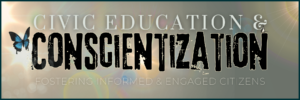Student-led protests have been making headlines in recent years, capturing the attention of the world as young people take to the streets to demand action on issues such as gun control and climate change. These protests have not only caused shifts in public discourse and policy-making but have also inspired a new wave of social and political activism. In this article, we will examine why student protests are the future of activism by exploring the power of youth activism, the role of social media, the importance of intersectionality, and the challenges faced by student protesters. We will also discuss what we can learn from their success, and the impact these young people can have on shaping the future of activism.
The Power of Youth Activism
As we have already discussed, student-led protests are creating significant changes in public opinion and government policies. Young people are using their voice and mobilizing to demand change on issues that directly impact their lives and the future of the planet. One of the most potent tools that are helping them is social media. Platforms like Twitter, Facebook, and Instagram have become crucial in amplifying the voices of young people and spreading their message far and wide. In the following paragraphs, we will explore how social media is playing a significant role in mobilizing youth, making their protests more visible, and rallying support for their cause.
Platforms like Twitter, Facebook, and Instagram have played an essential role in mobilizing young people to join protests and demonstrations. Social media has provided a space for students to share their stories and experiences, connect with like-minded individuals, and organize rallies across cities and countries. Hashtags like #FridaysForFuture, #NeverAgain, and #BlackLivesMatter have become an integral part of youth-led movements, helping them to gain visibility and international attention. Social media has also allowed young people to document their protests and share them with the world, making their voices heard far beyond traditional media channels.
The use of social media has enabled students to challenge traditional power structures and amplify their voices in ways that were previously impossible. Through online platforms, students can share their opinions, connect with people from different backgrounds, and build solidarity around common goals. Social media has also increased the accessibility of youth-led movements, allowing people from around the world to participate in digital activism and become a part of a larger movement for change.
However, while social media has been a powerful tool, it is not without its challenges. The algorithms that govern the way content is shared online can often limit the reach of youth-led movements, making it difficult for their messages to reach a wider audience. Additionally, social media can also be a hostile space, with online harassment and trolling often directed towards young people who speak out on issues of importance. As we move forward, it will be important to continue to explore how social media can be used in positive, constructive ways to mobilize young people and create lasting change.
The use of social media has been instrumental in mobilizing young people to protest and demand change, but it is crucial to recognize that youth-led movements must also prioritize intersectionality. The next section will explore why this is important and how it can lead to more effective activism.
Examples from history
Youth activism has a rich and significant history, as young people have been at the forefront of many social and political movements throughout the world. From the Civil Rights Movement in the United States to the Arab Spring in the Middle East, young people have played an essential role in advocating for change and shaping the course of history.
Argentina
Marea Verde
High school students organized to demand better sex education in schools. In 2006, a group of students from Buenos Aires formed the “Marea Verde” (Green Tide) movement, which pushed for comprehensive sex education to be included in the school curriculum. Through grassroots organizing, social media campaigns, and protests, the movement gained widespread support and managed to convince the Argentine government to pass a law mandating sex education in all schools.
Canada
The Quebec Student Protests
In 2012, high school and university students in Quebec organized massive protests against proposed tuition increases. The protests grew to include hundreds of thousands of people, making it one of the largest student movements in Canadian history. The student-led movement used creative tactics, including “casserole protests” where participants would bang pots and pans to make noise and show their dissent. The protests ultimately forced the provincial government to back down from the proposed tuition hikes and helped to spark a wider conversation about social and economic inequality in Canada.
Egypt
Tahrir Square Protests
In Egypt, the 2011 Tahrir Square protests, which eventually led to the overthrow of President Hosni Mubarak, were also largely driven by young people. The protests began as a response to police brutality against young activists and quickly grew into a massive movement for political and social change. Young people used social media to organize protests and document police violence, leading to international attention and support for the movement. The protests ultimately succeeded in toppling the Mubarak regime and paving the way for democratic elections.
France
Parcoursup
High school students organized a nationwide movement in 2018 to protest against the government’s education reforms. The movement, called “Parcoursup” (Pathway), aimed to resist the government’s changes to the university application process, which students believed would limit access to higher education for marginalized communities. The movement organized massive protests and strikes across the country, resulting in the government making significant concessions, including increasing university funding and reducing the impact of social background on admission decisions.
Tunisia
Arab Spring
In the MENA region, young people have long been at the forefront of social and political movements. In Tunisia, the 2011 uprising that overthrew the long-standing authoritarian regime was sparked by the self-immolation of a young street vendor, Mohamed Bouazizi, who had been harassed by the police. Bouazizi’s death ignited widespread protests across the country, led by young people, who demanded an end to corruption, poverty, and political oppression. The protests ultimately forced the president to step down, marking the beginning of a new era in Tunisian politics.
United States
The Birmingham Children’s Crusade
In the early 1960s, the civil rights movement was gaining momentum in the United States. In Birmingham, Alabama, high school students formed the Birmingham Children’s Crusade to protest segregation and discrimination. The students organized nonviolent protests and sit-ins, and their actions were met with violent resistance from authorities. The images of police brutality against these young activists, including the use of dogs and fire hoses, shocked the nation and helped to galvanize support for the civil rights movement. Ultimately, the Birmingham Children’s Crusade played a pivotal role in the passage of the Civil Rights Act of 1964, which outlawed discrimination on the basis of race, color, religion, sex, or national origin.
Zimbabwe
The Movement for Democratic Change Youth Assembly
In Zimbabwe, high school and university students have played a key role in the fight for democracy and human rights. The Movement for Democratic Change Youth Assembly is a student-led organization that has been at the forefront of this struggle. The group has organized protests, sit-ins, and other actions to demand fair and transparent elections, an end to political violence, and the protection of human rights. Their efforts have been met with repression and violence from the government, but they have persisted in their fight for change. In 2018, the youth-led movement played a significant role in the ousting of former president Robert Mugabe, who had been in power for 37 years.
The Importance of Intersectionality in Student Movements
It is no secret that young people have been at the forefront of many social justice movements in recent years. However, while these movements have been successful in bringing attention to important issues, it is crucial to recognize that they must prioritize intersectionality in order to create truly effective change.
Intersectionality refers to the interconnectedness of various forms of oppression, such as racism, sexism, and homophobia. Often, these oppressions are compounded and experienced by marginalized communities in unique and complex ways. By acknowledging and addressing these intersections, student-led movements can create more inclusive and effective activism.
For example, a movement that focuses solely on police brutality may inadvertently exclude the experiences of Black women, transgender individuals, or other marginalized groups who experience police violence in different ways. By centering intersectionality, student activists can work to create a more comprehensive and inclusive movement that addresses the needs of all those affected by systemic injustice.
It is important to note that prioritizing intersectionality is not always easy or straightforward. It requires ongoing education, self-reflection, and a willingness to listen to and learn from those with different experiences. However, by centering intersectionality, student-led movements can create a more effective, inclusive, and sustainable approach to activism.
That being said, it is important to also acknowledge the challenges and criticisms that student-led movements may face.
The Challenges and Criticisms of Student Protests
It is important to acknowledge that while student protests have the potential to bring about significant change, they are not without their challenges and criticisms. One of the main criticisms is that student protesters are often seen as “overly emotional” or “too radical.” This stereotype not only undermines the validity of their cause but also perpetuates the idea that only calm and rational forms of activism are legitimate.
Another challenge faced by student-led movements is the lack of support from those in positions of power. It is not uncommon for universities and institutions to respond with hostility to student protests, often resorting to tactics such as disciplinary action and arrests. Furthermore, student protesters may face backlash from their peers and the wider public who may view their actions as disruptive or unnecessary.
It is important to recognize these challenges and criticisms and work towards finding effective solutions to overcome them. By doing so, student-led movements can continue to grow and create meaningful change. With this context in mind, we can better understand and learn from the success of student protests and apply those lessons to future activism efforts.
What Can We Learn from the Success of Student Protests?
It’s clear that student protests have been successful in bringing attention to pressing social issues and driving change. But what can we learn from the success of these movements?
One key factor is the power of grassroots organizing. Student-led movements often start small, with a few passionate individuals coming together to advocate for change. As they gain momentum, they attract more supporters and allies, building a strong network of people who share their goals. This sense of community and collaboration can be incredibly powerful, as it allows activists to pool their resources, knowledge, and skills to achieve a common goal.
Another factor is the importance of clear messaging. Student protesters are often very articulate in expressing their demands and the reasons behind their actions. They use social media and other channels to spread their message, and make sure it’s consistent and easy to understand. This clarity helps build public awareness and support for their cause.
Finally, successful student protests often rely on creative tactics that capture the public’s attention. Whether it’s a sit-in, a march, or a publicity stunt, these actions can draw media coverage and generate buzz. They can also help convey the urgency and importance of the issue at hand, which can motivate more people to join the cause.
By studying the strategies and tactics used by successful student protesters, we can gain valuable insights into the best ways to advocate for change. We can also gain a better appreciation for the challenges and obstacles faced by these activists, and work to find solutions that empower them to continue making a difference.,
In conclusion, youth activism is not only powerful but also necessary for shaping our future. Student-led protests have shown us the impact of social media in mobilizing young people and the importance of intersectionality in creating coalitions. Despite criticisms, or perhaps in part because of them, student protests have proven to be effective in influencing politics and bringing about actual change.













